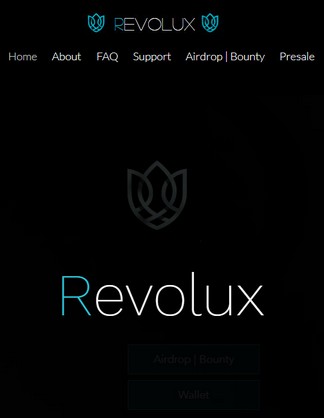Menu principal :
Revolux Coin
Hello, today I propose you to discover Revolux Coin
"have created a cencorship-resistant social network and ecosystem tailored for the POS community".
Revolux Coin is a new Cryptocurrency that got released in May 2018. Since the start, RVX has shown a unique interest in the end user and tried to make the coin accessible and easy to use for the community. The launch was a success for the community and environment itself were the driving forces behind this evolution, which is meant to provide end users "the community" with a cryptocurrency they can trust - with a name aimed for the mainstream - and with the following qualities: speed, efficiency and ease of use accompanied by a dedicated and personalized working design.
The solution to volatility, sustainability and efficiency
Revolux Coin is a strong digital currency with real life usage and a wide retailers network.
A full Proof-Of-Stake cryptocurrency, build to be volatile and extremely sustainable designed for everyday use reliability.
Revolux Coin (RVX) aims to become a world leading actor in the retail development of digital currencies.
—-
Revolux Coin objective is to build a strong retailers network all over the world and thus provide to people the ability to pay anywhere.
—-
There will be crypto change to increase the reliability regarding to the FIAT market.
—-
How it works:
Revolux Coin blockchain is a technology of storage and transmission of information, transparent, secure, and functioning without central control body..
By extension, a Revolux Coin blockchain is a database that contains the history of all the exchanges made between its users since its creation. This database is secure and distributed: it is shared by its different users, without intermediaries, which allows everyone to check the validity of the chain.
There are public blockchains, open to all, and private blockchains, whose access and use are limited to a certain number of actors.
A public blockchain can therefore be likened to a large public accounting book, anonymous and unfalsifiable. As the mathematician Jean-Paul Delahaye writes, one must imagine "a very large notebook, which everyone can read freely and freely, on which everyone can write, but which is impossible to erase and indestructible. "
Locate the Revolux Coin blockchain:
The first blockchain appeared in 2008 with the bitcoin digital currency, developed by a stranger appearing under the pseudonym Satoshi Nakamoto. It is the underlying architecture.
If blockchain and bitcoin were built together, today many actors (companies, governments, etc.) are considering the use of blockchain technology for other cases than digital currency.
Any public blockchain necessarily works with a currency or a token (token) programmable. Bitcoin is an example of a programmable currency.
Transactions between network users are grouped into blocks. Each block is validated by the nodes of the network called the "minors", according to techniques that depend on the type of blockchain. In the bitcoin blockchain this technique is called "Proof-of-Work", proof of work, and consists in solving algorithmic problems.
Once the block is validated, it is time stamped and added to the block chain. The transaction is then visible to the receiver as well as the entire network.
The decentralized character of the blockchain, coupled with its security and transparency, promises much broader applications than the monetary domain.
We can classify the use of the blockchain in three categories:
Applications for the transfer of assets (monetary use, but not only: securities, votes, shares, bonds ...)
Blockchain applications as a registry: it ensures better traceability of products and assets.
Smart contracts: These are stand-alone programs that automatically execute the terms and conditions of a contract, without requiring human intervention once started.
The fields of exploitation are immense: banks, insurance, health and pharmaceutical industry, supply chain of many sectors (agribusiness, luxury, international trade, distribution, wines, aeronautics, automobile ...), music industry, energy, real estate, vote ... De in general, blockchains could replace most of the centralized "trusted third parties" (banking trades, notaries, land registry, etc.) by distributed computer systems.
Of course, these promises are not without challenges, be they economic, legal, governance or ecological.
More info at: https://revoluxcoin.com/about & https://revoluxwallet.com


